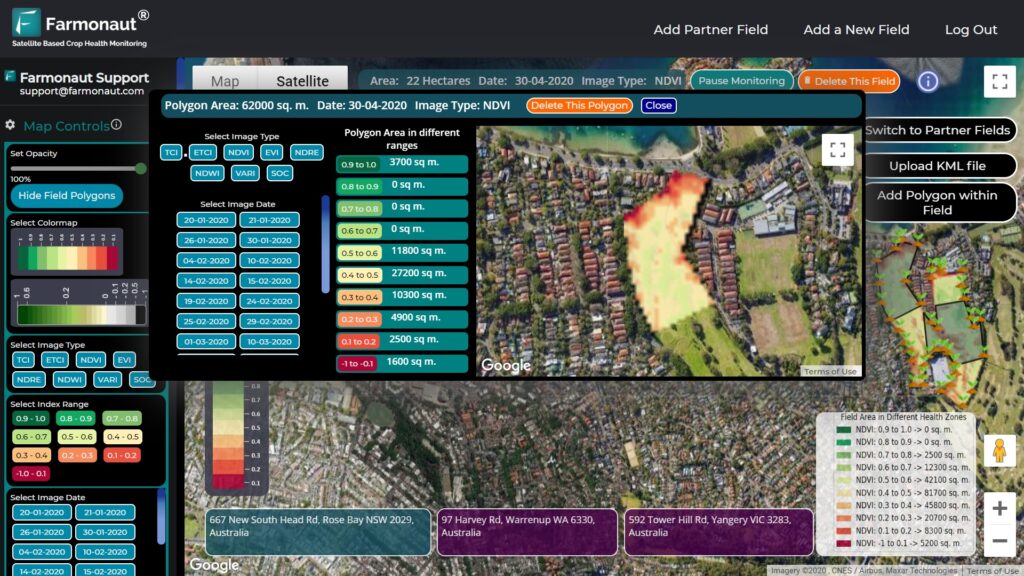Australian Stock Market Update: Mining and Tech Sectors Drive Index Losses Amid Global Economic Shifts
“The S&P/ASX 200 Index, Australia’s benchmark stock index, has trimmed early losses but remains below recent highs in 2023.”
Welcome to our comprehensive analysis of the Australian stock market’s latest developments. As we delve into the intricacies of the financial landscape, we’ll explore how various sectors are responding to global economic shifts and local market dynamics. Our focus today is on the performance of key industries, including mining, technology, banking, and energy, as well as the broader economic indicators shaping Australia’s financial future.
Market Overview: S&P/ASX 200 Index Performance
The Australian stock market is currently experiencing a period of fluctuation, with the benchmark S&P/ASX 200 Index trimming early losses but remaining below its recent highs. As of the latest trading session, the index is hovering just above the 8,200 level, reflecting a complex interplay of global and domestic factors influencing investor sentiment.
Let’s break down the key movements:
- The S&P/ASX 200 Index is down 57.30 points or 0.69%, settling at 8,210.90.
- The broader All Ordinaries Index has declined by 61.50 points or 0.72%, reaching 8,444.60.
- This downturn follows a modestly positive close in the previous session, highlighting the market’s current volatility.
These movements are crucial for understanding the Australian stock market trends and provide insight into the overall health of the nation’s economy.

Sector-by-Sector Analysis
To gain a deeper understanding of the market’s performance, let’s examine how different sectors are faring:
Mining Sector Stock Analysis
The mining sector is experiencing significant pressure, with major players showing notable declines:
- Rio Tinto and Fortescue Metals are both down more than 2%.
- BHP Group is losing almost 2%.
- Mineral Resources is slipping by almost 6%.
These movements in the mining sector stock analysis reflect broader concerns about global commodity demand and economic growth prospects.
Technology Stocks in Australia
The technology sector is also facing challenges, with several key stocks showing weakness:
- Xero is declining almost 3%.
- Zip is slipping almost 4%.
- WiseTech Global is down more than 3%.
- Appen is tumbling almost 12%.
However, it’s not all negative in the tech space, as Afterpay-owner Block is edging up 0.2%, providing a glimmer of hope for technology stocks in Australia.
Banking Sector Outlook
In contrast to the mining and tech sectors, the banking sector is showing resilience:
- Commonwealth Bank and Westpac are both gaining almost 1%.
- ANZ Banking and National Australia Bank are edging up 0.2% each.
This positive performance in the Australian banking sector outlook suggests that financial institutions are well-positioned to weather current market uncertainties.
Oil and Energy Market Updates
The energy sector is presenting a mixed picture:
- Santos is edging up 0.4%.
- Beach Energy is edging down 0.4%.
- Woodside Energy and Origin Energy remain flat.
These oil and energy market updates reflect the complex global energy landscape and its impact on Australian companies.
Gold Mining Industry News
“Australian gold mining stocks and tech companies are experiencing significant movements, influencing overall market performance in the country.”
The gold mining sector is facing challenges, with most stocks in negative territory:
- Gold Road Resources and Resolute Mining are down almost 3% each.
- Northern Star Resources and Newmont are declining more than 2% each.
- Evolution Mining is losing more than 3%.
These movements in gold mining industry news highlight the sensitivity of precious metal stocks to global economic factors and currency fluctuations.
Notable Company Updates
Several individual companies are making headlines with significant news:
- Star Entertainment: Shares have plummeted almost 18% as the casino operator faces uncertainty about its ability to continue trading beyond Friday, citing various operational conditions that need to be met.
- Endeavour Group: The retailer and hotel operator’s shares have tumbled more than 6% following a 15.1% drop in interim profit, leading to a 12.6% reduction in dividends.
- Vista Group: In contrast, shares in this data analytics provider have soared more than 13% after reporting strong earnings for 2024, driven by an increase in clients transitioning to cloud solutions.
These company-specific updates underscore the diverse challenges and opportunities facing Australian businesses in the current economic climate.
| Sector Name | Percentage Change (estimated) | Key Stocks | Notable Factors |
|---|---|---|---|
| Mining | -2.5% | Rio Tinto, BHP Group, Fortescue Metals | Global commodity demand concerns, economic growth prospects |
| Technology | -3.5% | Xero, Zip, WiseTech Global | Global tech sell-off, valuation concerns |
| Banking | +0.6% | Commonwealth Bank, Westpac, ANZ Banking | Resilience in financial sector, potential interest rate impacts |
| Energy | -0.1% | Santos, Woodside Energy, Origin Energy | Fluctuating oil prices, global energy demand uncertainty |
Economic Indicators Australia
To provide a comprehensive view of the Australian financial landscape, let’s examine some key economic indicators:
Credit Growth in Australia
The Reserve Bank of Australia has released important data on credit growth:
- Total credit increased by 0.5% month-on-month and 6.5% year-on-year in January.
- Housing credit rose by 0.4% monthly and 5.6% annually.
- Personal credit remained flat monthly but increased 2.2% annually.
- Business credit grew by 0.7% monthly and 8.8% annually.
- Broad money expanded by 0.3% monthly and 5.2% annually.
These figures on credit growth in Australia provide valuable insights into the health of various sectors of the economy and consumer behavior.

Australian Dollar Exchange Rate
In the currency market, the Australian dollar exchange rate is currently trading at $0.622, reflecting the complex interplay of domestic economic factors and global currency trends.
Understanding these economic indicators is crucial for investors and businesses operating in the Australian market. They provide context for the stock market movements and help in forecasting future trends.
Global Market Influences
The Australian stock market’s performance is not occurring in isolation. Global market cues, particularly from Wall Street, are playing a significant role in shaping local sentiment. The broadly negative cues from Wall Street overnight have contributed to the current downturn in the Australian market.
Factors influencing global markets include:
- Ongoing concerns about inflation and interest rates in major economies.
- Geopolitical tensions and their impact on trade and investment flows.
- The performance of key international stock indices and their ripple effects on global markets.
These global influences underscore the interconnected nature of modern financial markets and the importance of maintaining a broad perspective when analyzing local market trends.
Future Outlook and Investor Considerations
As we look ahead, several factors will likely continue to shape the Australian stock market:
- Commodity Prices: Given the significance of the mining sector, fluctuations in global commodity prices will remain a key driver of market performance.
- Tech Sector Evolution: The performance of technology stocks will be crucial, as this sector increasingly influences overall market direction.
- Banking Sector Stability: The resilience of Australian banks will be important for maintaining investor confidence.
- Global Economic Recovery: The pace and nature of the global economic recovery will have significant implications for Australian exports and corporate earnings.
- Monetary Policy: Decisions by the Reserve Bank of Australia regarding interest rates and monetary policy will continue to impact market sentiment.
Investors should consider these factors when making investment decisions and portfolio allocations in the Australian market.
Farmonaut’s Role in Agricultural Technology
While we focus on the broader Australian stock market, it’s worth noting the innovative contributions of companies like Farmonaut in the agricultural technology sector. Farmonaut offers advanced, satellite-based farm management solutions that are transforming the agricultural landscape.
Key features of Farmonaut’s technology include:
- Real-time crop health monitoring using satellite imagery.
- AI-driven advisory systems for personalized farm management.
- Blockchain-based traceability solutions for supply chain transparency.
- Resource management tools for optimizing agricultural operations.
These technologies are particularly relevant in the context of Australia’s significant agricultural sector and its importance to the national economy.
Conclusion
The Australian stock market is navigating a complex landscape of domestic and global factors. While challenges persist in sectors like mining and technology, areas such as banking show resilience. As investors and market watchers, we must remain vigilant to the evolving economic indicators and global market influences that shape Australia’s financial future.
Stay informed, diversify wisely, and consider the long-term trends as you make your investment decisions in this dynamic market environment.
FAQ Section
Q1: What is driving the current losses in the Australian stock market?
A1: The current losses are primarily driven by weakness in the mining and technology sectors, influenced by global economic shifts and sector-specific challenges.
Q2: How is the banking sector performing compared to other sectors?
A2: The banking sector is showing resilience, with major banks like Commonwealth Bank and Westpac posting gains, in contrast to the declines seen in mining and tech stocks.
Q3: What economic indicators should investors watch closely?
A3: Key indicators to watch include credit growth rates, housing market data, business credit trends, and the Australian dollar exchange rate.
Q4: How are global market trends affecting the Australian stock market?
A4: Global market trends, particularly those from Wall Street, are significantly influencing Australian market sentiment and performance.
Q5: What sectors are showing potential for growth despite current market challenges?
A5: While facing overall market pressure, sectors like banking and select technology companies (e.g., Block) are showing potential for growth or resilience.
Earn With Farmonaut: Affiliate Program
Earn 20% recurring commission with Farmonaut’s affiliate program by sharing your promo code and helping farmers save 10%. Onboard 10 Elite farmers monthly to earn a minimum of $148,000 annually—start now and grow your income!













